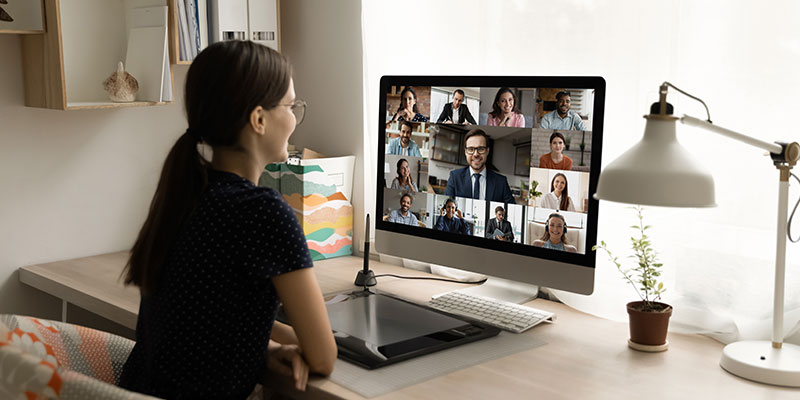
Remote employee monitoring software is more than just using software to track your staff. It is the art of using technology to enhance work efficiency without violating employee privacy. It is a practice that ought to be handled with a lot of finesse if it needs to be effective in the long run.
Most of us think the pandemic drove the demand for remote working. It is or was one of the main factors why business leaders preferred this work mode. Among the other factors that encouraged employers to make remote working a norm were:
For a world that was, for centuries, so used to people working from offices, the concept of remote working was welcomed with open arms. However, employee monitoring comes with its drawbacks. Leaders who work remotely face a number of challenges they do not face in traditional office settings, such as:
Having to deal with so many drawbacks is no walk in the park for any organization. Here’s where remote employee monitoring comes into play.
Essentially, remote employee monitoring is the practice of monitoring geographically dispersed employees with activity monitors, time trackers, basic checklists, and sophisticated tools.
Remote employee monitoring has come a long way from the initial days when it was frowned upon. Today, organizations don’t give a second thought to investing in employee monitoring software because it offers more pros than cons.
It helps in:
However, these benefits are achievable only if employee monitoring is implemented in a responsible manner. It's important to choose an employee tracking tool carefully to balance monitoring requirements with individual privacy and autonomy. Let's discuss some of the most effective methods of monitoring remote employees now that we know what it is and why it is so important.
1. Utilize task management apps
Remote employees can be monitored using top-notch task management apps, which is a more effective and beneficial approach. A project and task management application can help your business organize, manage, and assign tasks related to a variety of projects.
2. Use time-tracking software
Time trackers are excellent tools to keep tabs on how your employees spend their work time. You can use it to track their work throughout the day or to ascertain the time taken for certain projects. Regardless of the method, a time tracker is a perfect tool for keeping track of employee work hours without micromanaging them.
3. Implement self-reporting
Instilling a culture of self-reporting works wonders for you and your staff, especially if you have a small workforce. It encourages a sense of ownership and accountability among employees and motivates them to keep an eye on their progress. This self-analysis allows them to determine their ability and preferences to ensure a balanced workload.
4. Create task lists
Task lists allow employees to focus on specific tasks instead of being overwhelmed with large projects. Eventually, task creation and management will become a job in itself. It becomes the manager’s responsibility to assign tasks to employees and tick them off as they are completed. By doing so, your staff will know which task to prioritize and be accountable for completing it.
5. Utilise KPIs
The concept of productivity tracking comprises the activities that contribute to your overall company's Key Performance Indicators. Each of these metrics should be relevant to the department and the employees’ job roles. They should be measurable and relevant for maximum impact. Such metrics will mirror individual performances and the progress of the entire team.
6. Track employees’ email activities
An employee’s email is a good indicator of how much work they are handling at a given time. Tracking your staff’s email activities will give you an accurate picture of what task they are doing, when, and why.
Also Read: 8 Mistakes You Should Never Make With Remote Employee Monitoring
7. Ensure complete transparency
You have a moral and legal obligation to your staff to keep them informed about the monitoring practice and how you intend to implement it. At the same time, it is imperative to avoid micromanaging them and restrict your tracking to what’s necessary and beneficial for everyone. Generally, company surveillance technology will allow you to monitor:
In short, be honest about the steps you take to avoid creating a distrustful culture.
8. Assign managers with monitoring tasks
Rather than asking employees to voluntarily report on their current workloads, you can assign the task to managers or supervisors. It will help you gather more accurate information and rebalance employee workloads if the situation calls for it.
The above-mentioned guidelines are proven ways to implement remote employee monitoring. However, there are three critical aspects to follow with remote monitoring:
Ensuring that all three protocols are in place can be a little tricky, but not impossible. Here’s a list of tips to help you measure employee productivity without intruding on their privacy or micromanaging them.
The ideal approach to managing a remote team is through remote employee monitoring. It helps employees focus on the task at hand instead of giving in to distractions in their place of work. It is important to choose the method or combination of methods that most closely fits your business's needs when monitoring employees working from home.
More/Hour is designed to create a win-win situation for you and your remote employees. By signing up for More/Hour’s remote employee monitoring software, you can rest assured that your employees will be organized, efficient, and productive. Call us for more details.